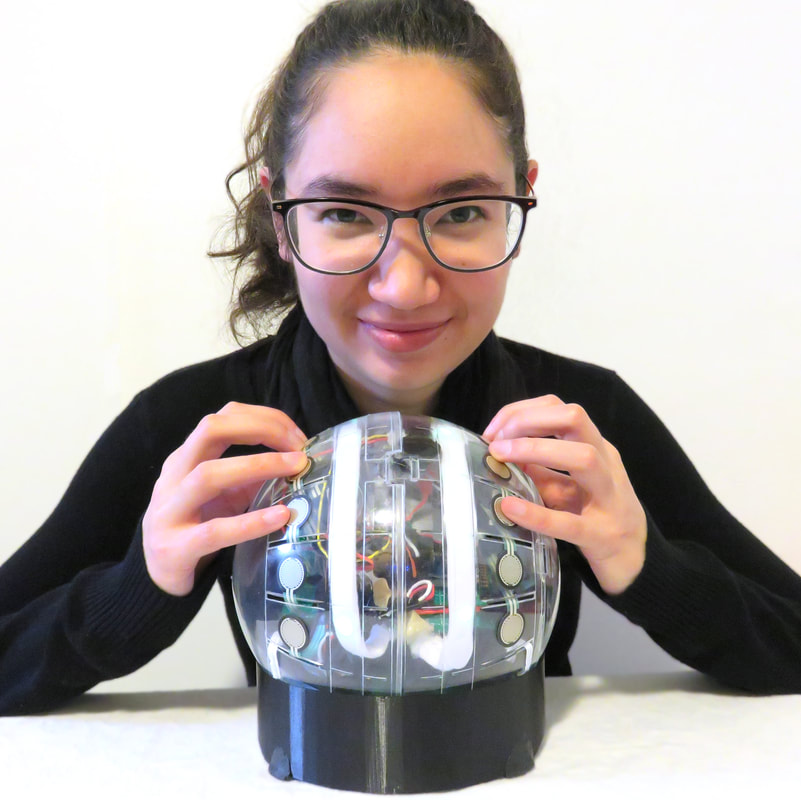|
My thesis is to consider the limitations and affordances of different sensors first in order to come up with new concepts for new DMIs; in particularly Alternate Gestural Controllers (Miranda and Wanderly, 2006). So it is the opposite of having a design problem or design concept, then trying to think of what sensor to use to make it.
1) I started with going through the Adafruit website and copying details of each type of potentially useful sensor into charts. There were colour/light, biosensors, sound, IMUs, proximity, touch, and raw materials and textiles that could be turned into analog sensors. I ignored environment related sensors, such as temperature, barometric pressure, and moisture sensors, because I want to focus on sensors that measure human input as opposed to environmental input. Technically light sensors/photocells fall under this category of environmental, but light is easy for humans to directly, or indirectly manipulate it. Same with colour. 2) I then took each of these sensors and categorized them by their affordances and limitations. 3) I then made a Max Patch that output a random name of one sensor, two sensors, three sensors, or four sensors (based on which button is clicked). I didn't necessarily need a software to give me these lists of random combinations of sensors. However, I found it made it easier to constantly have to think about new groupings that I don't necessarily expect. That way I don't think too long about any single sensor and the ideas are less likely to become stagnant. I made a spreadsheet of ideas of new DMIs with only one sensor, two sensors, etc. While coming up with ideas, I had a rule that I could conceptually use as many of one type of sensor as I want, just as long as I utilize every sensor that was listed in the Max Patch per DMI. I found that when I was coming up with ideas for 1 sensor DMIs, I had many ideas per sensor. I also took note of which DMI concepts could be made with alternative sensors. For example, IR distance sensors, ultrasonics, and time of flight sensors all work very similarly and the main reason of using one over the other is the distance of their sensing range and possible interferences. My best ideas for the 1 sensor category I intuitively wanted to add more types of sensors. So in terms of creative flow it went from: Sensor => limitations and affordances => concept for how it is interacted with/attached to an object/gestures => add more sensors to existing instrument design. When I moved on to the 2 sensor chart, I only had one or two ideas for DMIs for each combination of sensors. When I got to the 3 sensor chart, there were times where I felt stumped as to what I could make with some combinations. Sometimes two of the sensors given were similar enough that it would be redundant to use both of them in one DMI, or it didn't make sense to combine them given their limitations, such as resistive touch screen, acceleration from a phone app, and leap motion. Other times one type of sensor could create interference for another type of sensor. And sometimes I couldn't think of any ideas other than a DIY MIDI interface. I left those blank. The difficulties for coming up with ideas increased with the 4 sensor chart, with much more combinations of sensors left blank. Interestingly, some of my favourite ideas use multiple different types of sensors. It would seem that it is much easier to start with one sensor, then think about what other sensors to add to it than to be given a handful and figure out what to do with them. My favourite ideas I sketched out on paper and listed the sensors, and what group the sensors came from (1 sensor, 2, 3, 4, or spontaneous other) I'll add the charts to this blog post after I cleaned them up.
1 Comment
|
Welcome!If you are looking for a summary for my Masters thesis, it is here. Archives
November 2022
Categories |
 RSS Feed
RSS Feed

